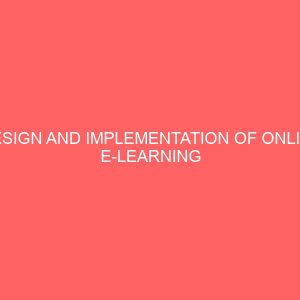Description
CHAPTER ONE INTRODUCTION 1.1 BACKGROUND OF THE STUDY The rise of e-business in the late 1990?s led to the development of new opportunities related to procurement: e-procurement, spend management, outsourcing and joint product design (Lancioni, Smith, and Oliva, 2000). E-procurement is defined as an Internet-based purchasing system that offers electronic purchase order processing and enhanced administrative functions to buyers and suppliers, resulting in operational efficiencies and potential cost savings. Most of the companies nowadays can be seen as being composed of three primary processes which are purchasing, manufacturing and distribution based on the overall flow of materials (Thawiwinyu and Laptened, 2009). So, in order for the companies to remain competitive in the market, it?s must reduce the costs of their components or parts and materials by sourcing from cost saving suppliers. Nowadays most of the organizations are increasingly doing E-Business using information and communication technologies and the additional use of internet too. The traditional procurement which is lowly, back-end process has been transformed into E-Procurement with the emerging technologies that make everything possible and within reach. Furthermore, with increasing on competitive pressures, supply chain management professionals must continually find solution to reduce costs, increase efficiency, and also to reduce the longest lead time. Procurement now is seen as a core player in supply chain focus on time to market, product quality based competition, cost efficiency, inventory management, and customer uncertainty. According to Monczla and Morgan (2000), this can be solved by the key competitive priorities for the 21st century is the maximization of Internet-based technologies such as E-Procurement. In 1990’s along with rapid growth of the Internet, Electronic Commerce (EC) in traditional market was founded. This study attempts to assess the e-Procurement success factors in telecommunication organizations of Nigeria. The main purpose of this study is to understand how the various factors play their role in making e-Procurement technology a success for the business. 1.2 STATEMENT OF THE PROBLEM Overall, e-procurement adoption in private sector in VOI may be below expectations due to a lack of understanding of the consequences from non-adoption and link to competitive advantage, a presumption that e-procurement is mostly for large businesses, and the notion that it is too early to assess conclusively (CFO Europe, 2003). In addition, there is evidence that the adoption process is complex and onerous, and intervention may be necessary to stimulate initial adoption and subsequent implementation. E-procurement adoption is an area of both threat and opportunity in terms of business productivity and competitiveness Even if the benefits of adoption and the potential strategic implications of e-procurement are recognized, the list of impediments for private sectors includes items that are major potential barriers for an effective adoption: risk, uncertainty, inefficiencies from supplier and catalogue-content readiness, cultural change, staff resistance, need for firm wide training with likely disruption of on-going activities each one of these makes it difficult for SMEs to implement e-procurement strategies, to the possible extent that the implementation may be deemed too difficult. One possible explanation for a slow adoption process is that the adoption decision is complex? while many benefits arise in the longer term, major impediments and associated potential costs may be very short term (e.g. extensive staff training). Associated benefits and costs are difficult to estimate in real terms. It is on this basis that the study examined factors influencing implementation of e-procurement in private sector. 1.3 RESEARCH OBJECTIVES 1. To find out the level of the implementation of e-procurement in the private sector. 2. To examine the success of e-procurement implementation in the private sector. 3. To ascertain the effect of skills of private sector employees and suppliers on implementation of e-procurement in private sectors 4. To determine the effect of cost of systems infrastructure on implementation of e-procurement in private sector. 5. To establish the factors influencing implementation of e-procurement in private sector. 6. To ascertain the important factors that contributes to the success of e-procurement in private sector. 1.4 RESEARCH QUESTIONS 1. What is the level of the implementation of e-procurement on the private sector? 2. What is the level of success of e-procurement implementation in the private sector? 3. What is the effect of skills of private sector employees and suppliers on implementation of e-procurement in private sectors? 4. What are the factors influencing implementation of e-procurement in private sector? 5. What are the important factors that contribute to the success of e-procurement in private sector? 1.5 SIGNIFICANCE OF THE STUDY The study will be used by companies to get more knowledge on factors affecting use of e-Procurement in Private sector. The knowledge will be used by the researcher to develop more knowhow on e- Procurement; it will assist scholars interested in conducting research in e- procurement and related areas as a source of reference. The study will assist policy makers on e- Procurement in companies both for private and public sectors, which will help shape the procurement sectors to perform better with implementing e-Procurement in business activities. 1.6 SCOPE OF THE STUDY The study of critical factors that influences e-procurement implementation success in the private sector is limited to the Ibadan Electricity Distribution Company, General Gas, Akobo Ibadan. 1.7 LIMITATIONS OF THE STUDY 1. Network interconnectivity to enhance elaborate research ? 2. High level of illiteracy 3. Organization operational huddles. 4. Time and cost constraints due to cause of scarcity in gasoline to go about the research.







